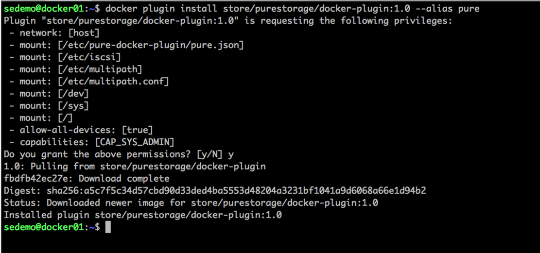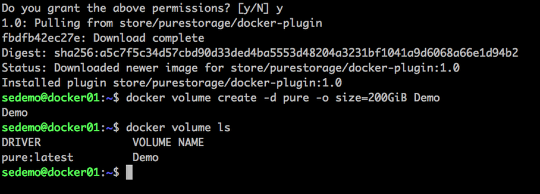Remember the prerequisites. Check the official README for the latest information. Official README
Platform and Software Dependencies
Operating Systems Supported:
- CentOS Linux 7.3
- CoreOS (Ladybug 1298.6.0 and above)
- Ubuntu (Trusty 14.04 LTS, Xenial 16.04.2 LTS)
Environments Supported :
- Docker (v1.13 and above)
- Swarm
- Mesos 1.8 and above
Other software dependencies:
- Latest iscsi initiator software for your operating system
- Latest linux multipath software package for your operating system
Review: To install the plugin –
docker plugin install store/purestorage/docker-plugin:1.0 --alias pure
OR if you are annoyed by having to hit Y for the permissions the plugin requests.
docker plugin install store/purestorage/docker-plugin:1.0 --alias pure --grant-all-permissions
The installation process is the same as a standalone docker host except you must specify your clusterid. This is a unique string you assign to your swarm nodes.
docker plugin disable pure
docker plugin set pure PURE_DOCKER_NAMESPACE=<clusterid>
docker plugin enable pure
When you first install the Pure Volume Plugin the plugin is enabled. Docker will not allow you to modify the namespace while the plugin is in use. So we need to disable the plugin before making changes. This also means it is best to do this before creating and using any volumes.
Remember to put your API token and array management IP in the pure.json file under /etc/pure-docker-plugin/ – for each host.
More information Here
Demo for setting up Swarm and testing container failover




